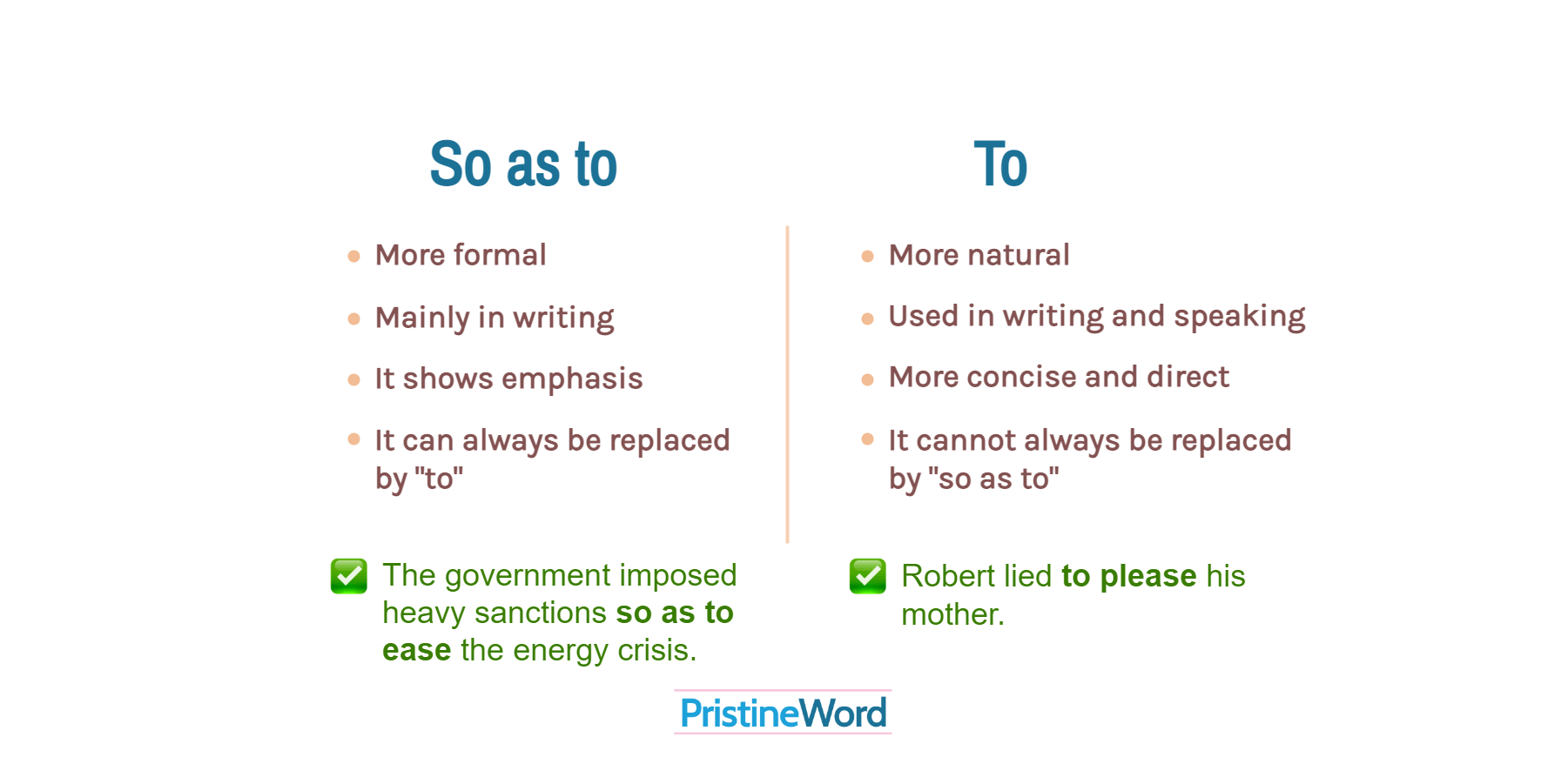"So as to" and "to" are prepositions that have an infinitive as its object. When expressing purpose, they both have the same meaning.
"So as to" and "to" are prepositions that have an infinitive as its object. When expressing purpose, they both have the same meaning.
The cardiology service works so as to be recognized as a center of excellence.
The cardiology service works to be recognized as a center of excellence.
What's the difference?
- "So as to" is much more formal. It is also much more frequent in writing than in speaking (e.g., "The government has imposed heavy sanctions so as to ease the energy crisis.")
- "To" sounds more natural and direct. Use it to craft concise sentences and reduce wordiness (e.g., "Robert lied to please his mother.")
- We also use "to" in informal situations and everyday language (e.g., "Use the fork to eat and the spoon to mix drinks.")
- "So as to" can be used for emphasis.
- "So as to" is also more commonly followed by a stative verb, such as be, recognize, have, learn, know, appear, seem, etc. Remember, stative verbs describe a state rather than an action (e.g., "They analyzed the situation so as to understand the relationship between vision and values.")
- While "so as to" is always followed by an infinitive (e.g., "so as to recognize"), "to" can be followed by an infinitive or a noun (e.g., "to play" or "to Dallas").
- "So as to" can always be replaced "to". "To", however, cannot always be replaced by "so as to".
Alternatively, you can use "in order to" instead of "so as to" since they carry a similar degree of formality and explicitness.

